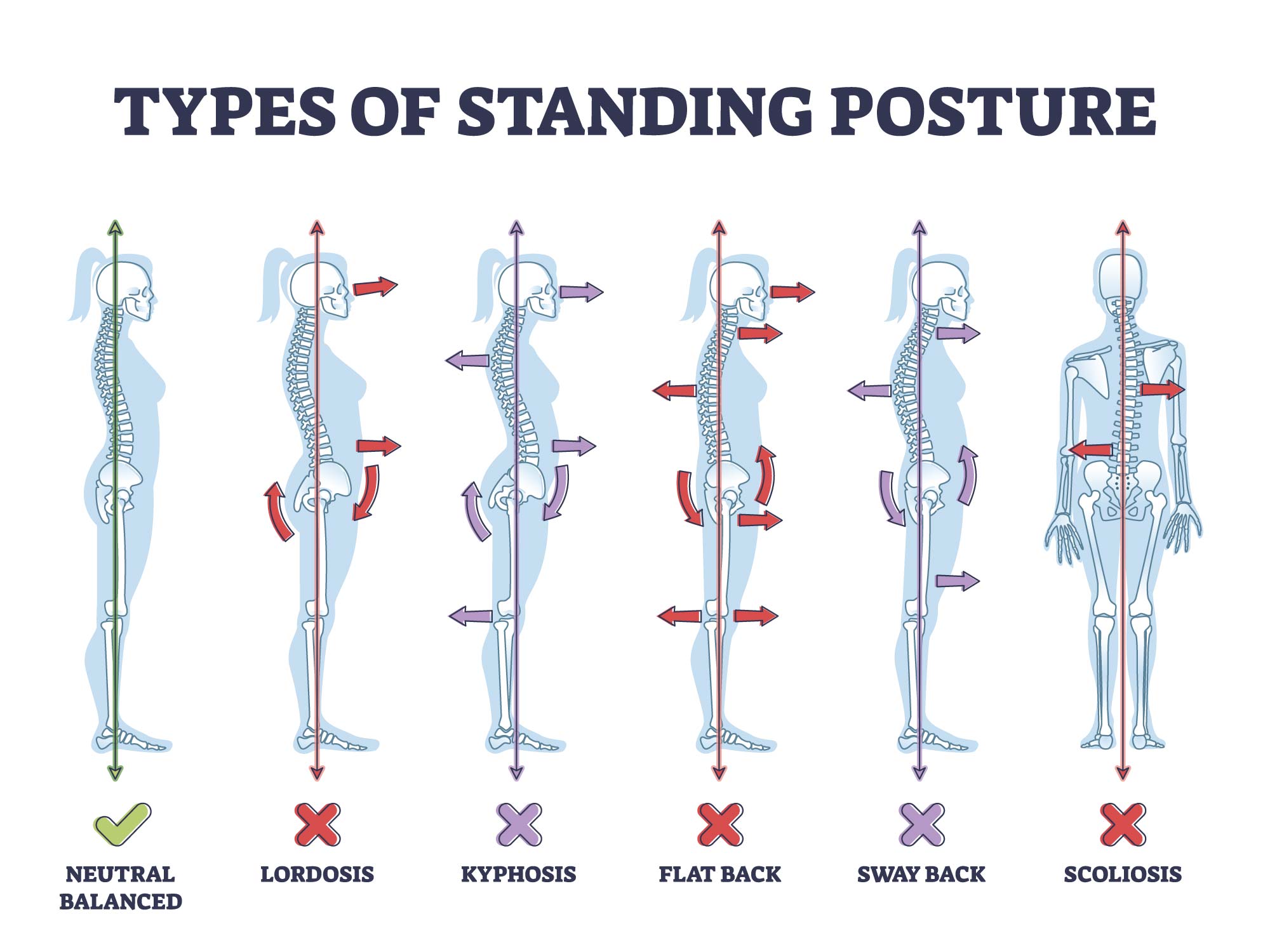Posture is one of the most important aspects of quality dancing, yet one that is so misunderstood. We all recognize it when we see it. But it can be hard to achieve. What is good posture? How do we get it? And how do we maintain it while dancing?
From the time we try to lift our heads not long after our first breath, we fight against this strange force called Gravity. If you’ve ever watched a baby going through that struggle, you’ll understand how challenging it really is. Over time, we finally win the battle by actually standing on our own two feet. It’s a moment of great achievement, and toddlers can be relentless in taking advantage of this new mobility. Although we conquer it, gravity is relentless. It never gives up. We spend our lives continuing the fight. As people age, often times gravity begins to take over once again and some people end up right back at the beginning of the battle.
You’ve become pretty good at fighting gravity. Most of the time the postural battle isn’t something we notice in everyday activities. We sit, we stand, we walk, we dance. Generally, we aren’t too aware of gravity until we feel something, like back pain. But the battle is always there.
The best dancers seem to defy gravity. They look light as air. They move with an easy grace and power that can seem beyond reach for the average person. When you watch great dancing, you see someone who is using a minimal amount of muscular energy to achieve a maximum amount of movement. This is a terrific goal for every dancer. We want to reduce the amount of energy we apply, yet increase the amount of movement that happens.
This is achieved by maximizing the impact of posture.
When you watch great dancing you see someone who is using a minimal amount of muscular energy to achieve a maximum amount of movement.
What is good posture?
Posture is created by lining up the various parts of our body so that the effect of gravity is reduced to its smallest impact. If anything is out of balance, gravity gets involved. As a result, we have to work to compensate for that out-of-balance condition. When your head comes forward, it adds pressure to your spine. It takes your body out of balance. Gravity starts to pull you forward and you need to use muscular energy to remain upright.
Young people hunched over their phones may not really notice, at their age, how much energy they are wasting through the process, but they are. Over time there will be a price to pay for this effort.
Likewise, if you tuck your pelvis too far under you or let it stick out behind you, those postural conditions cause muscles to become engaged that get in the way of good, efficient movement. To be a great dancer, you need to understand how being out of balance affects gravity’s impact on your body. That doesn’t mean being out of balance is always wrong. There are times it is actually applied on purpose to achieve better movement, such as the way we move our body forward in Tango before we release the leg, allowing energy to be applied that creates greater body flight. We have to know how to use these forces strategically to create intentional movement. In this way you maximize your movement but without adding unnecessary muscular energy.
Posture actually begins at the base of our spine, in the pelvic region. The spine is our central core. Everything related to posture begins here. We rotate around the spine, stretch bilaterally within it, and move through it. Shown below are typical types of standing posture.
Achieving good posture involves the use of dual vertical energy through the spine. The spine stretches up from the pelvis, while the legs pull down into the floor. The effect is similar to how you might take a wet towel with both hands and squeeze them in opposition to each other to wring out the water. Those opposing forces automatically lift your rib cage, and automatically push you into the floor to ground your movement. Your head lifts because of the spine, requiring no extra effort. You shouldn’t need to lift your chin or push your rib cage out, or squeeze your shoulders back or take any other artificial action.
Don’t tilt your pelvis back, as that pulls your spine out of alignment. Likewise, you shouldn’t stick your pelvis forward. In Paso Doble, there is a slight change in the use of the pelvis but it isn’t created by jutting our pelvis forward. Instead, we simply move our entire spine further forward. In all the other dances, all you need to look great and dance efficiently is to have a good posture that’s no different from what you would normally carry.
Training our posture
Sadly, what many dancers tend to do is to adopt one type of posture for everyday life and then apply “dance posture” when they start to dance. I did this myself when I first started competing. I didn’t have bad normal posture, but when I would get ready to take dance hold, I thought I had to do something extra. I would stiffen everything up, stick my rib cage out, stretch my elbows rigidly out to the sides, and tighten up all the core muscles. In essence, I was stiffening everything up, making it even harder to move efficiently! This was caused by a misunderstanding of dance posture.
The goal should be to create the right posture all the time. Stand with good posture when you’re waiting in a grocery store lineup. Walk with good posture on a sidewalk. Sit with good posture when at the computer. When you take dance hold, nothing should change. If you make it a lifelong habit to stand straight, hold your spine properly with opposing vertical energy, and line up your head over your spine, nothing should visibly change when you are ready to take dance hold. The only change that should be visible is that your arms lift and fall into the right position for your partner.
Moving forward in dance
When we move forward while dancing, we rely on our legs to act as the primary power source. They need to be relaxed to have the ability to maximize our movement. We also employ gravity by allowing the spine to come forward, slightly pulling us out of balance to begin the forward energy. In the swing dances, we lower to create additional power through the strategic use of gravity, a free source of power that doesn’t require muscles to add to our volume of movement. Think of it as if someone is pulling your belt. One of my early instructors used to physically pull my belt buckle forward to help me to understand how this should work.
Too often, dancers are late moving their spine when they move forward. The result is that the head moves forward before the rest of the body. To your partner, it feels as if you are falling on top of them, even when it’s only an inch or so of difference!
Moving backwards in dance
When we move backwards, a common problem is moving the legs, then the butt, with the head being late to the party. This also has the effect of making it feel to your partner that you are falling on them. Instead, move the head with the leg. Imagine that a string is attached to the back of your head and to your heel. As the foot moves, it pulls the head with it. Getting this feeling in your body will help your spine to move together with the leg to keep everything properly aligned. If you’ve had a problem with leaving the head, it may feel at first as if you are leaning backwards, but that feeling will pass once you get used to coordinating these actions.
In short, to achieve the goal of maximizing your movement with the least amount of energy expenditure, train yourself to maintain a good posture in every area of life. Then apply that same posture throughout your dancing. You’ll look great and you’ll move efficiently.















